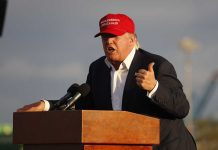
The White House is set to begin interviewing candidates for the Federal Reserve Chair position this fall, well ahead of Jerome Powell’s term ending in May 2026.
Top Takeaways
- Treasury Secretary Scott Bessent announced that the White House will start interviewing Federal Reserve Chair candidates in fall 2025, providing a six-month lead time before Powell’s term ends.
- Bessent reassured that President Trump is not looking to compromise the Federal Reserve’s independence despite Trump’s public calls for lower interest rates.
- The Treasury Secretary distinguished between the Fed’s monetary policy role and its regulatory duties, suggesting more discussion may focus on the latter.
- Regular meetings between Bessent and Powell indicate stability in financial markets with no significant concerns requiring emergency planning.
- The administration views the selection process as routine governance rather than a dramatic overhaul of the Federal Reserve system.
White House Plans Six-Month Lead Time for Fed Chair Selection
Treasury Secretary Scott Bessent revealed that the White House will begin interviewing potential successors to Federal Reserve Chair Jerome Powell this fall. The timeline allows for a six-month preparation period before Powell’s term concludes in May 2026. This strategic planning indicates the administration’s commitment to a smooth transition at the nation’s central bank. The announcement came during Bessent’s visit to Argentina, where he addressed various economic concerns including trade relations and monetary policy.
Bessent’s comments come amid ongoing discussion about the Federal Reserve’s role in managing inflation and economic growth. President Trump has openly expressed his desire for lower interest rates, using his Truth Social platform to communicate his views on monetary policy. Despite these public statements, Bessent has worked to reassure financial markets that the administration respects the Fed’s operational independence while potentially seeking more dialogue on regulatory matters.
This would be a PERFECT time for Fed Chairman Jerome Powell to cut Interest Rates. He is always “late,” but he could now change his image, and quickly. Energy prices are down, Interest Rates are down, Inflation is down, even Eggs are down 69%, and Jobs are UP, all within two…
— Donald J. Trump Posts From His Truth Social (@TrumpDailyPosts) April 4, 2025
Distinguishing Between Monetary Policy and Regulatory Duties
A key aspect of Bessent’s recent communications has been highlighting the distinction between the Federal Reserve’s monetary policy decisions and its regulatory responsibilities. While the Fed’s independence in setting interest rates remains sacrosanct, Bessent noted that there may be more discussion about the central bank’s role as a banking regulator. This nuanced approach acknowledges that the Fed operates as one of three major bank regulators alongside the Office of the Comptroller of the Currency and the Federal Deposit Insurance Corporation.
The Treasury Secretary’s careful distinction suggests the administration may seek greater coordination on regulatory matters while respecting the traditional independence of monetary policy decisions. This approach aims to reassure financial markets while potentially addressing Republican concerns about overregulation. Bessent’s comments reflect a nuanced understanding of the Fed’s dual mandate and the political sensitivities surrounding central bank independence.
🇺🇸 NEW: Secretary Bessent was asked who he thinks should replace Jerome Powell as Chairman of the Federal Reserve in 2026.
Bessent: “We think about it all the time.” pic.twitter.com/FiEF4uQ0JU
— Cointelegraph (@Cointelegraph) April 14, 2025
Regular Consultations Signal Economic Stability
Bessent has established a routine of regular meetings with Powell, discussing various economic indicators and market conditions. During their most recent consultation, Bessent reported no significant concerns about bond market developments or other potential financial stability risks. This “business as usual” characterization suggests that despite public speculation about dramatic changes to Fed leadership, the working relationship between the Treasury and the Federal Reserve remains professional and focused on economic stability.
The absence of emergency contingency planning discussions between Bessent and Powell indicates confidence in current economic conditions. This pragmatic approach to governance contrasts with more dramatic narratives about potential Fed independence threats. The administration appears to be treating the upcoming leadership transition as a normal governmental process rather than an opportunity for radical policy shifts at the central bank.






















